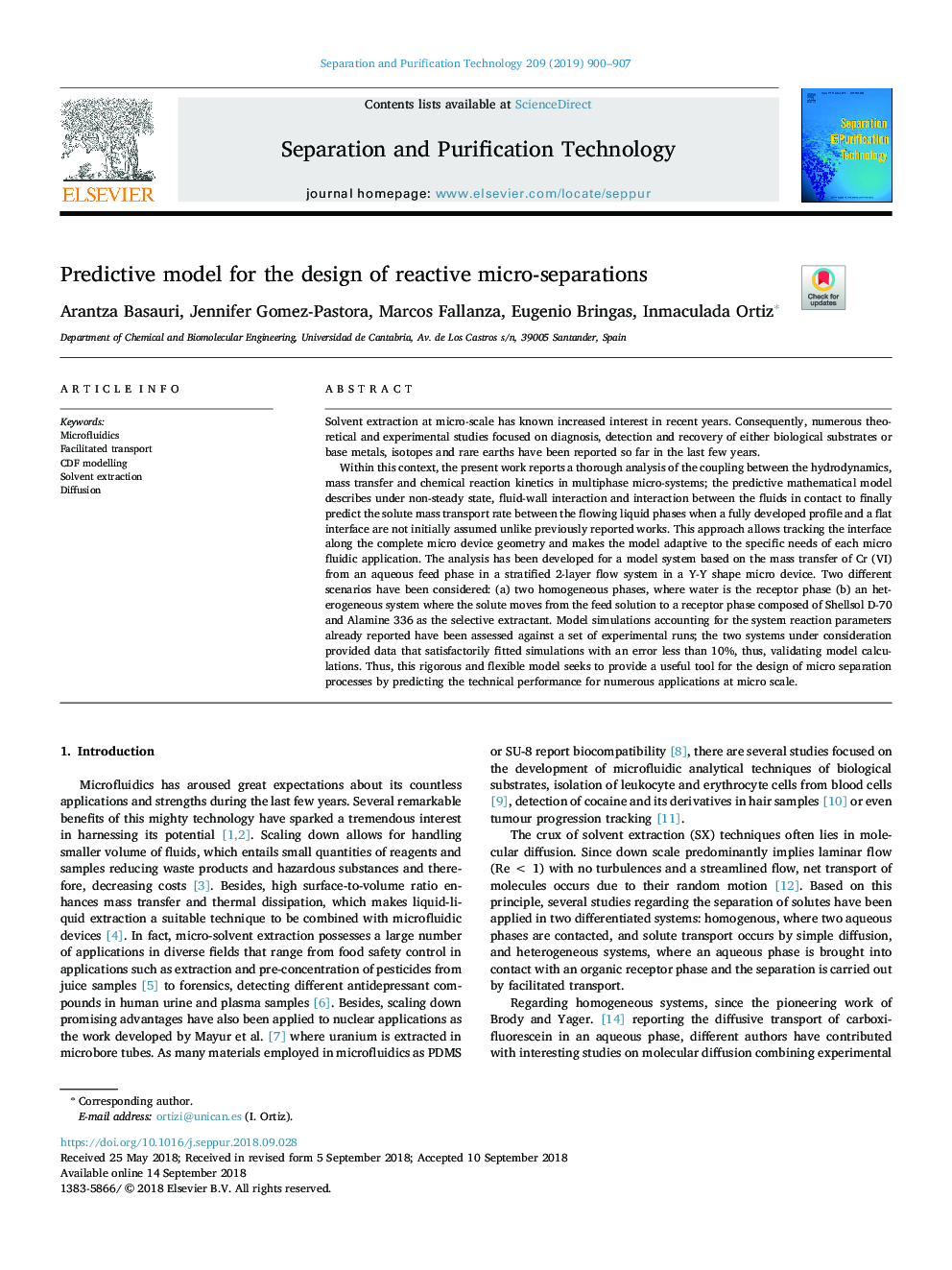| Article ID | Journal | Published Year | Pages | File Type |
|---|---|---|---|---|
| 11003360 | Separation and Purification Technology | 2019 | 8 Pages |
Abstract
Within this context, the present work reports a thorough analysis of the coupling between the hydrodynamics, mass transfer and chemical reaction kinetics in multiphase micro-systems; the predictive mathematical model describes under non-steady state, fluid-wall interaction and interaction between the fluids in contact to finally predict the solute mass transport rate between the flowing liquid phases when a fully developed profile and a flat interface are not initially assumed unlike previously reported works. This approach allows tracking the interface along the complete micro device geometry and makes the model adaptive to the specific needs of each micro fluidic application. The analysis has been developed for a model system based on the mass transfer of Cr (VI) from an aqueous feed phase in a stratified 2-layer flow system in a Y-Y shape micro device. Two different scenarios have been considered: (a) two homogeneous phases, where water is the receptor phase (b) an heterogeneous system where the solute moves from the feed solution to a receptor phase composed of Shellsol D-70 and Alamine 336 as the selective extractant. Model simulations accounting for the system reaction parameters already reported have been assessed against a set of experimental runs; the two systems under consideration provided data that satisfactorily fitted simulations with an error less than 10%, thus, validating model calculations. Thus, this rigorous and flexible model seeks to provide a useful tool for the design of micro separation processes by predicting the technical performance for numerous applications at micro scale.
Related Topics
Physical Sciences and Engineering
Chemical Engineering
Filtration and Separation
Authors
Arantza Basauri, Jennifer Gomez-Pastora, Marcos Fallanza, Eugenio Bringas, Inmaculada Ortiz,
